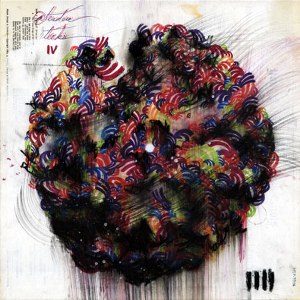Teebs - Ardour (Brainfeeder)
A man of many talents turns his hand to the art of sound with his debut record.
Released Nov 5th, 2010 via Brainfeeder / By Brendan Morgan
 Blooming with abstract colours and melodic detail, Ardour is a record cultivated out of art. A skateboarder turned painter turned musician, Mtendere Mandowa (aka Teebs) composes his music in the way he approaches his paintings. Many seemingly isolated fragments melt together in energy and expression. Ardour is a translation of his artwork to music.
Blooming with abstract colours and melodic detail, Ardour is a record cultivated out of art. A skateboarder turned painter turned musician, Mtendere Mandowa (aka Teebs) composes his music in the way he approaches his paintings. Many seemingly isolated fragments melt together in energy and expression. Ardour is a translation of his artwork to music.The record was a project put together during two years of unemployment. While the rest of us would be groaning about job opportunities, Teebs just got busy and the freedom of electronic music seemed to suit his tastes. The production techniques like time shift and chopped sampling (possibly relayed to him under the watchful eye of Brainfeeder) are ubiquitous of folktronica and the likes of Gold Panda or Four Tet. His ethnic rhythms are off balanced and threaten to blow away if not for the weight of some hip-hop influenced beats. Acoustic samples of twinkling bells and various wind-chimes unite with cosy synths swelling in waves and pulses. It all simulates natural movement like wind gently tugging at clothes on a line.
When these fragments resolve into a more recognisable form – heard during the excellent groove of ‘Gordon’ – its drifting feel satisfyingly takes shape like a scrapbook of grainy photographs. ‘Double Fifths’ the albums first stand out track banishing a magical pitch bending harp over wooden percussion and later on ‘Moments’ employs a cascading piano and ‘Wind Loop’ a sweetly rising chime melody.
Ultimately, Ardour’s impressionistic quality works itself into the background and into obscurity. As you begin to fall into the mood of a track it dematerialises and lurches to another. I imagine every one these 18 incidental tracks, the bubbly ‘Double Fifths’ for one swelling to a grand strings section or some kind of further elaboration. Instead they jaunt off like a shy bumble bee. Even the album’s end is flighty and inconclusive. This will either instil a sense of longing in the listener or struggle to make a mark.
Just like Modern Art, it goes for impact and for concise and polished expression. In this way Ardour is at odds with its enveloping atmosphere, though I doubt it was intentional as Teebs has allowed the record to take on its own home-made form. Ardour is definitely an experimental album; an exposés of his creativity set loose in a different medium. But it is the sights and sounds of his travels and experiences, as well as a blurring of art and music that make this a busy, beautiful record.





 All Content RSS Feed
All Content RSS Feed
Follow Bearded on...